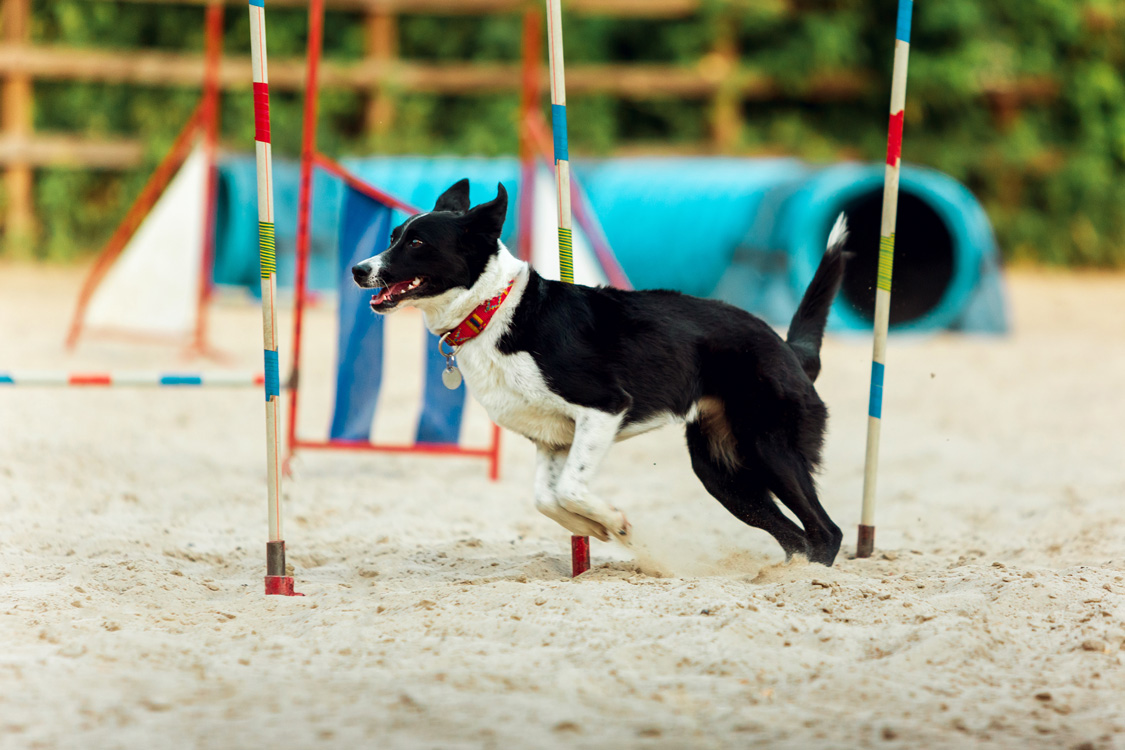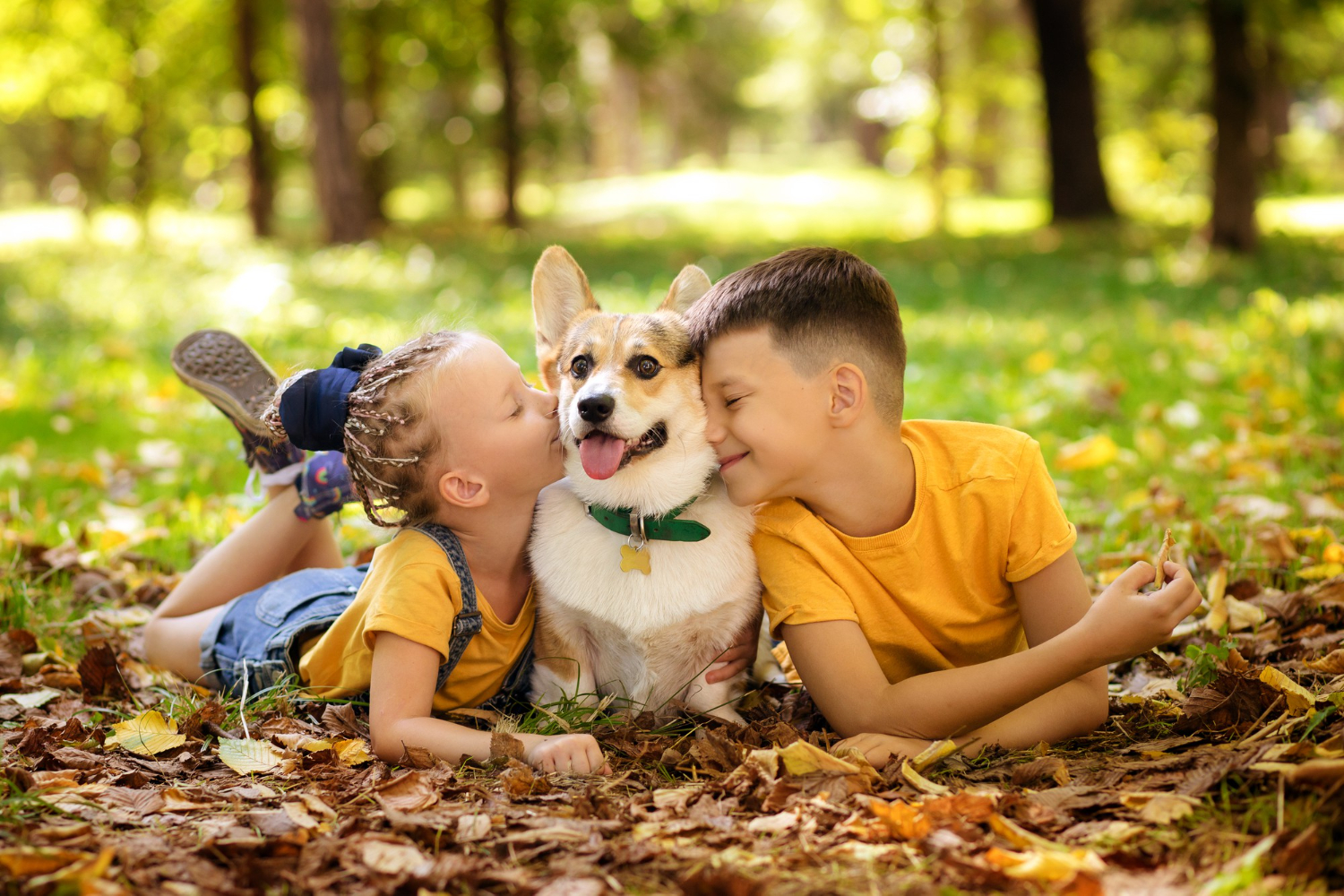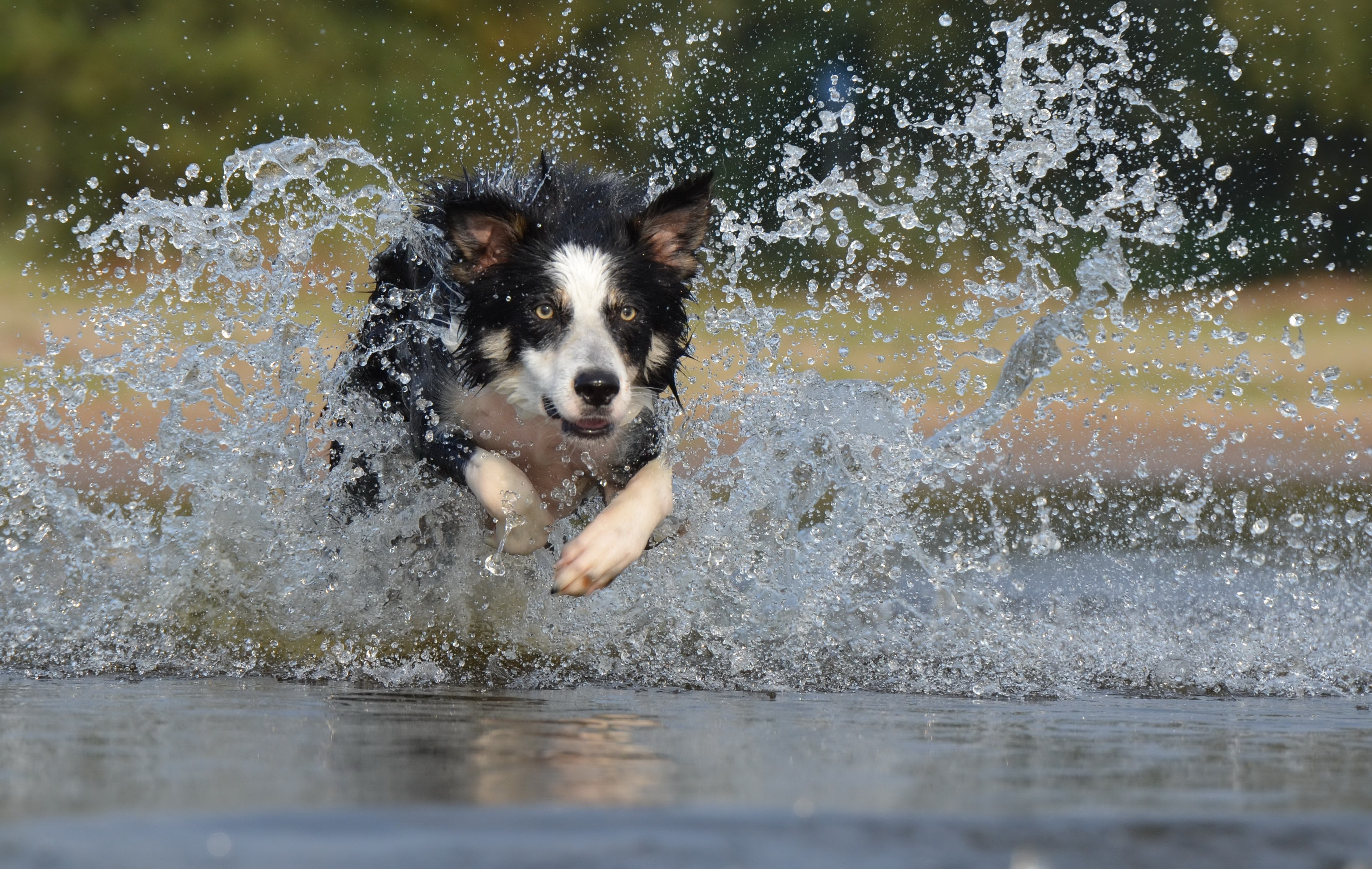Canine Personality Profile
Canine Personality
Your dog was born with a set of instinctive behaviors that he inherited from his parents.
Canine Personality
Your dog was born with a set of instinctive behaviors that he inherited from his parents.
These behaviors can be grouped into three broad categories – prey, pack and defense – called drives. How many behaviors a dog has in each drive, will determine his temperament, his personality and how he perceives the world.
BEHAVIORS IN EACH DRIVE
Prey drive includes those inherited behaviors associated with hunting,
killing prey and eating. It is activated by motion, sound and smell.
Behaviors associated with prey drive are seeing, hearing, scenting, tracking, stalking, chasing anything that moves, pouncing, high-pitched barking, jumping up, biting, killing, pulling down, shaking, tearing and ripping apart, carrying, eating, digging and burying.
You see these behaviors when your dog is chasing the cat, or gets excited and barks in a high pitched tone of voice as the cat runs up a tree. Your dog may also shake and rip apart soft toys and bury dog biscuits in the couch.
Pack drive consists of behaviors associated with being part of a pack,
including reproductive behaviors.
Dogs are pack animals, which means adhering to a social hierarchy governed by rules of behavior to assure order. In the case of a dog, the ability to be part of a group translates itself into a willingness to work with us as part of a team.
Pack drive is stimulated by rank order in the social hierarchy. Physical contact, playing and behaviors associated with social interaction with other dogs, as well as reproductive behaviors, such as licking, mounting, washing ears and all courting gestures, are part of pack drive.
A dog with many of these behaviors is the one that follows you around the house, is happiest when with you, loves to be petted and groomed, and likes to work with you. Such a dog may be unhappy when left alone for long periods.

Defense drive is governed by the instincts for survival and self preservation,
and consists of both fight and flight behaviors.

Defense drive is more complex than prey and pack drive, because the same stimulus that can make a dog aggressive (fight), can also elicit avoidance (flight) behaviors, especially in the young dog.
Fight behaviors tend not to be fully developed until the dog is over two years of age, although tendencies towards these behaviors will be seen at an earlier age. Examples of fight behaviors are a dog that "stands tall," stares at other dogs and likes to "strut his stuff." He will stand his ground with his ears and whiskers pointed forward and his tail held up.
He will go toward unfamiliar objects or situations, and his hackles will go up from his shoulders to his neck. He may guard his food, toys or territory from other dogs or people, and may dislike being petted or groomed. Such a dog will lie in front of doorways or cupboards, making his owner walk around him.
Flight behaviors demonstrate that the dog is unsure. Examples are hackles that go up the full length of the body, not just at the neck, hiding or running away from new situations, a dislike of being touched by strangers or a general lack of confidence. Young dogs tend to exhibit more flight behaviors than older dogs. Freezing (not going forward or backward) is generally considered inhibited flight behavior.
YOUR DOG’S PERSONALITY
To help you understand your dog’s behaviors, Jack and Wendy Volhard cataloged ten behaviors in each drive and created the Canine Personality Profile. The ten behaviors chosen are the ones that most closely represent the strengths of the dog in each of the drives. The Profile does not pretend to include all behaviors seen in a dog.
The results of the Profile will give you a good starting point for understanding why your dog does what he does. This understanding will help you make his training a positive and enjoyable experience for both of you.
When completing the Profile, keep in mind that it was devised for a house dog or pet with an enriched environment and not a dog tied out or kept solely in a kennel; such dogs have fewer opportunities to express as many behaviors as a house dog. Answers should indicate those behaviors your dog would exhibit if he had not already been trained to do otherwise. For example, did he jump on people or the counter to steal food, before he was trained not to do so? Other behaviors, in turn, are only seen in a training context, such as during training with distractions.

Click below and learn more about your dog's personality!
NOW WHAT THE SCORES MEAN?
Not surprisingly, the results of the Profile tend to be breed specific. If your dog was bred to hunt or herd – think Labrador and Border Collie – chances are that he is highest in prey drive, followed by pack, fight somewhere below 50 and a few flight behaviors. If he was bred to guard or protect – think German Shepherd – his score for fight behaviors will probably be well above 50, perhaps a few flight behaviors, but still many prey and pack behaviors.
A dog bred for drafting – think Bernese Mountain Dog – should be high in pack, low in fight and have few prey behaviors; you would not want him to chase after a cat with his little cart bouncing behind. If you have an All American, he will have the same mixture of behaviors, with the predominant number determined by his ancestry.

The majority of dogs are high in prey, which only makes sense in light of the majority of the tasks they were bred to perform. Unfortunately, it is also the drive that is the most irritating to you, his owner, and the one that gets the dog into trouble. What does he do when you take him for a walk? Pull you here, there and everywhere, with his nose on the ground following various scents, or walk quietly at your side? When he spots a squirrel, does he set off in hot pursuit or ignore it? When you call him, does he come or keep going in the other direction?
NOW WHAT?
Before you can use the results of the Profile, you first have to take a look at what you are trying to teach your dog, we are going to call him Felix, and which drive he has to be in to respond to a given command.
For most of the commands you want Felix to know, he needs to be in pack drive – walking on leash without pulling, sit and stay, go lie down and come when called. Responding to these commands requires him to be in pack drive, that is, doing something for you. You certainly don't want him to be in prey (chase), or defense drives (guard or flee). All else being equal, a dog with many Pack behaviors (more than sixty) will have no difficulty with learning these exercises.
Prey drive behaviors, those required for retrieving and jumping, although not necessary for basic obedience commands, come in handy in the training of the dog that has few Pack behaviors. Through the use of a treat or toy, you can exploit prey behaviors to teach a pack exercise.
Theoretically, dogs do not need defense drive (fight) behaviors for basic training, but the absence of these behaviors has important ramifications. It is pivotal and determines how the dog has to be trained. The beauty of the drives theory, if used correctly, is that it gives you a tool to overcome areas where a dog is weak. For example, it can be used to teach a dog with few pack behaviors how to walk on a loose leash by using prey behaviors.
BRINGING OUT DRIVES
Following are the basic rules for bringing out drives:
1. Prey drive is elicited by the use of motion -- hand signals (down or come) -- a high-pitched tone of voice, or an object of attraction (defined as anything the dog will actively work for, such as a stick, toy or food), chasing or being chased, and leaning backward with your body.
2. Pack drive is elicited by physical affection, verbal praise and smiling at the dog. Grooming, and playing bring out Pack drive behaviors.
3. Defense drive behavior is elicited by leaning over the dog, either from the front or the side, checking (a sharp tug on the leash) or a harsh tone of voice.
SWITCHING DRIVES
Felix can instantaneously switch himself from one drive to another. Picture him playing with his favorite toy (Prey), when the doorbell rings. He drops the toy and starts to bark (Defense). You open the door and it is a neighbor whom Felix knows. He goes to greet the visitor (Pack) and returns to play with his toy (Prey).
During training your task will be to figure out how to switch your dog from one drive into another. For example, you are teaching Felix to walk on a loose leash in the yard when a squirrel scampers up a tree. Felix spots it, runs to the end of the leash, straining and barking excitedly in a high-pitched voice. He is in full-blown Prey drive. Now you have to get him back into Pack where he needs to be in order to walk at your side. To get Felix from Prey into Pack, you first have to go through Defense, at least in the teaching process and until he has learned to do it on command.

The precise manner in which you get Felix back into Pack -- remember, you must go through Defense -- depends on the strength of his Defense drive. If he has a large number of Defense (fight) behaviors, you can give her a crisp tug and release on the leash (check), which switches him out of Prey into Defense. To get him into Pack, touch him gently on the top of the head, smile and tell him how clever he. If he is low in Defense (fight) behaviors, a check may overpower him, and a voice communication, such as "Ah, ah" will be sufficient to put him into Defense, after which you put him into Pack drive.
For the dog that has few fight behaviors and a large number of flight behaviors, a check is also counter-productive. Body postures, such as bending over the dog, or a deep tone of voice are usually enough to elicit Defense drive. Your dog, by his response to your training -- cowering, rolling upside down, not wanting to come to you for the training session -- will show you when you overpower him, thereby making learning difficult, if not impossible.
THE BASIC RULES OF SWITCHING:
1. From Prey into Pack in the teaching process, you go through Defense. How you put your dog into Defense will depend on the number of Defense (fight) behaviors he has. As a general rule, the more Defense (fight) behaviors the dog has, the firmer the check needs to be. As the dog learns, a barely audible voice communication or a slight change in body posture will suffice to encourage your dog to go from Prey through Defense into Pack drive. Once Felix has learned what you want him to know, he switches himself.
2. From Defense into Pack by touching or smiling; and
3. From Pack into Prey with an object (food) or motion.
Applying the concept of drives and learning which drive Felix has to be in and how to get him there will speed up your training process enormously. You will no longer confuse Felix. As you become aware of the impact your body posture and motions have on the drive he is in, your messages will be perfectly clear to your dog. Your body language is congruent with what you are trying to teach. Since Felix is an astute observer of body motions, after all, this is how dogs communicate with each other, he will understand exactly what you want.

